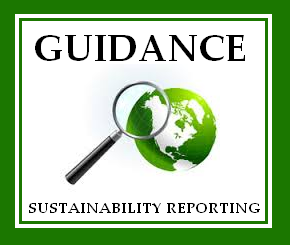This summary is designed to provide guidance for businesses seeking to navigate the complicated landscape of sustainability reporting. There are a number of different ways to approach sustainability reporting and this has led to considerable confusion.
While it is generally accepting that sustainability reporting has a number of benefits, businesses can have a difficult time understanding the differences between approaches and deciding which system is best for their organization. One of the most important trends involves integrated reporting and specifically the 4D approach.
One of the key issue that is deciding what to include in such reports. The World Resources Institute and the World Business Council for Sustainable Development have provided guidance on this issue with two mutually exclusive "boundary setting approaches" in their treatise on carbon accounting called the WRI/WBCSD GHG Protocol. Those approaches are:
Control Approach
1. Operational Control: Report on 100 percent of anything where you have the authority to introduce and implement operating policies. This is the most commonly used boundary-setting approach.
2. Financial Control: Report on 100 percent of anything in which you bear the majority risk/reward from the operation’s financial performance. Note 50 percent ownership or more is NOT a criteria for financial control. Instead, it is merely whether or not you bear the majority risk/reward, however that may be contractually allocated between you and the other owner(s).
Equity Share Approach
This method of involves reporting in proportion to your ownership in the operation. If you own 32 percent of a factory, for example, you report on 32 percent of the factory's emissions. This is the simplest, most straightforward accounting approach.
* It is important to pick one of these two approaches and not try to combine elements of both together.
However, the lack of uniformity from reporting standards like CDP, GRESB and GRI complicate matters. CDP lets you choose an approach whereas GRESB dictates an unorthodox blend of operational, financial and equity control. What to include and when? Here’s a suggested way to draw your boundaries for GRESB and CDP using the example of real estate companies.
Here is a summary of some other recent guidance that responds to market calls for greater coherence, consistency and comparability between frameworks, standards and requirements:
In May The biggest global names in corporate reporting, CDP, the Global Reporting Initiative, the Climate Disclosure Standards Board, the Financial Accounting Standards Board, IASB, ISO, SASB and the International Integrated Reporting Council published a landscape map that provides a snapshot of a comparison of their frameworks, standards and related requirements through the lens of integrated reporting.
In February Ecometrica, in collaboration with CDP, launched a white paper called Managing Information for Climate Change that serves as a roadmap for sustainability reporting. This effort comes in response to the heightened pressure from customers, investors and regulators for greater transparency.
In March 2015 The Global Reporting Initiative and investment firm RobecoSAM have published a guide that explores materiality from a sustainability reporter’s perspective, as expounded in GRI reports, and compares this with the investor perspective of materiality, as formulated by RobecoSAM. The guide is called Defining Materiality: What Matters to Reporters and Investors.
At the end of 2014, SustainAbility launched a tool to help companies improve transparency in their sustainability reporting by focusing on gathering and providing information on the most material issues.
In 2013 G4 Guidelines were release that have an increased emphasis on the need for organizations to focus on those topics that are material to their business and their key stakeholders. The Global Reporting Initiative launched a service to help improve the usability and transparency of data in sustainability reports. GRI also offers a handbook that introduces the GRI Sustainability Reporting Process for all G4 reporters. The publication provides a step by step approach to the five-phase sustainability reporting process and is based on the G4 Guidelines.
Related
The Future of Integrated Sustainability Reporting
Sustainability Reporting to Minimize Negative Impacts and Increase Positive Benefits
Sustainability Reporting: Video of Company efforts to Engage New GRI G4 Guidelines
Webinar - Sustainability Reporting to GRI G4: Time to Make The Switch
Meaningfull Change to Make CR Reporting Pay: Inverviews
Video - Corporate Sustainability Report 2013: The Way to Long
Home
Business
Corporate
disclose
disclosure
Information
practice
public
responsible
Review
summary
Sustainability
sustainable
transparency
Comprehensive Summary of Sustainability Reporting Guidance
- Blogger Comment
- Facebook Comment
Subscribe to:
Post Comments
(
Atom
)


0 comments:
Post a Comment